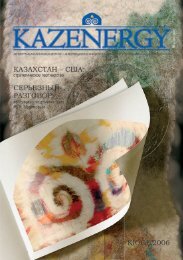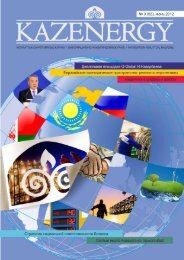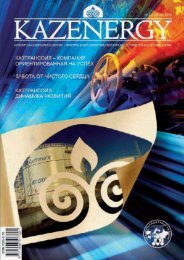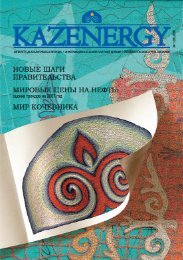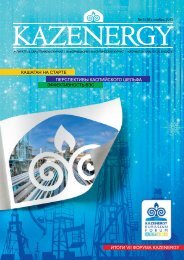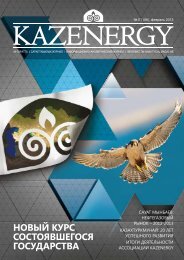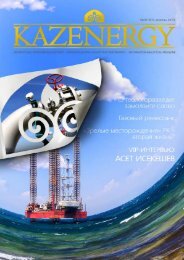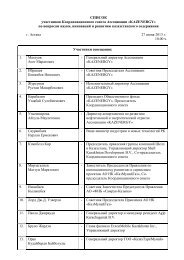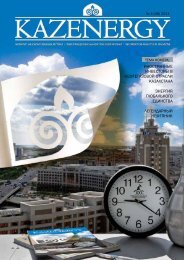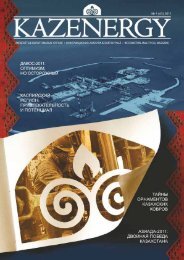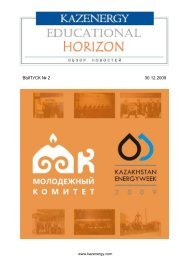â 5 (49), 2011 - KazEnergy
â 5 (49), 2011 - KazEnergy
â 5 (49), 2011 - KazEnergy
- No tags were found...
Create successful ePaper yourself
Turn your PDF publications into a flip-book with our unique Google optimized e-Paper software.
actualhad ambitious plans for future developmentand in 1916 the Emba fields were alreadythe third most productive in Russia. Bakuled with 7.5 million tons; Grozny yielded1.66 million tons, followed by Emba's twohundred forty-five thousand."“An unsolicited opportunity”Thanks to their control over transportationfacilities towards the north, the Nobel brothersdid manage to pick some fruits of theiroil field developments for some time, thoughnever to the extent they had done so in Baku.By assuring themselves of transportationand sales facilities from the very beginning,Nobel remained true to its tradition of secur-Caspian Sea, the Emba. Here, there existedan exclusive exploration license valid untilNovember 25, 1912, for a site of two millionhectares, from which at random zayavkiy,exploration sites of 37.5 dessiatin, could beselected. Oil finds on such a site granted theright to an otvod, or development license inthe order of 10 dessiatin.British capital“The license holder (whether the author refersto the Russo-Hungarian tandem thathad been working in the area before remainsunclear - ChvdL) had had to confinehimself to a number of manual drillings,which did show the presence of petroleumHenri Deterdinging markets and production simultaneouslyrather than the notorious policy pursued bythe world's leading oil producers up to thisday: pump first, market later.As for the Royal Dutch, ever dependent onoutside trade facilities, this was not to be thecase. In his voluminous work Geschiedenisder Koninklijke (History of the Royal (Dutch)in six volumes), the Dutch historian C. Gerretsonrelates to its venture as follows: "In1911 an unsolicited opportunity was beingoffered to obtain the supervision of an explorationoperation in one of these areas. Beyondthe desolate salt steppes of the Caspianlowland, only roamed by Kyrgyz herdsmen,on the Mugodshar mountain ridge whichseparates the basins of the Uralsk and Turgaydepressions, there is the source of a riverthat flows to the northeastern corner of thewithout, however, providing results in termsof commercially viable quantities,” Gerretsonwrites. “In 1909, the license holder hadtransferred his rights to a certain 'NorthCaspian Syndicate', which in the usual wayof participation by British capital in Russianmining enterprise had incorporatedthem in a Russian company, the shares ofwhich were in the possession of the British'Ural Caspian Oil Corporation', establishedin London on April 15, 1910 with acapital of 60,000 pounds Sterling, and outof which in their London issue only a smallpart had been taken by the public. In May1911, however, the 'Ural Caspian' managedto hit a powerful gusher near the Dossor saltlake, and this success of course triggered astrong increase of the share value of 'UralCaspian' as well as protest from numerousBaku companies big and small. The board ofthe British company decided to seize the op-58 № 5 (<strong>49</strong>), <strong>2011</strong>




